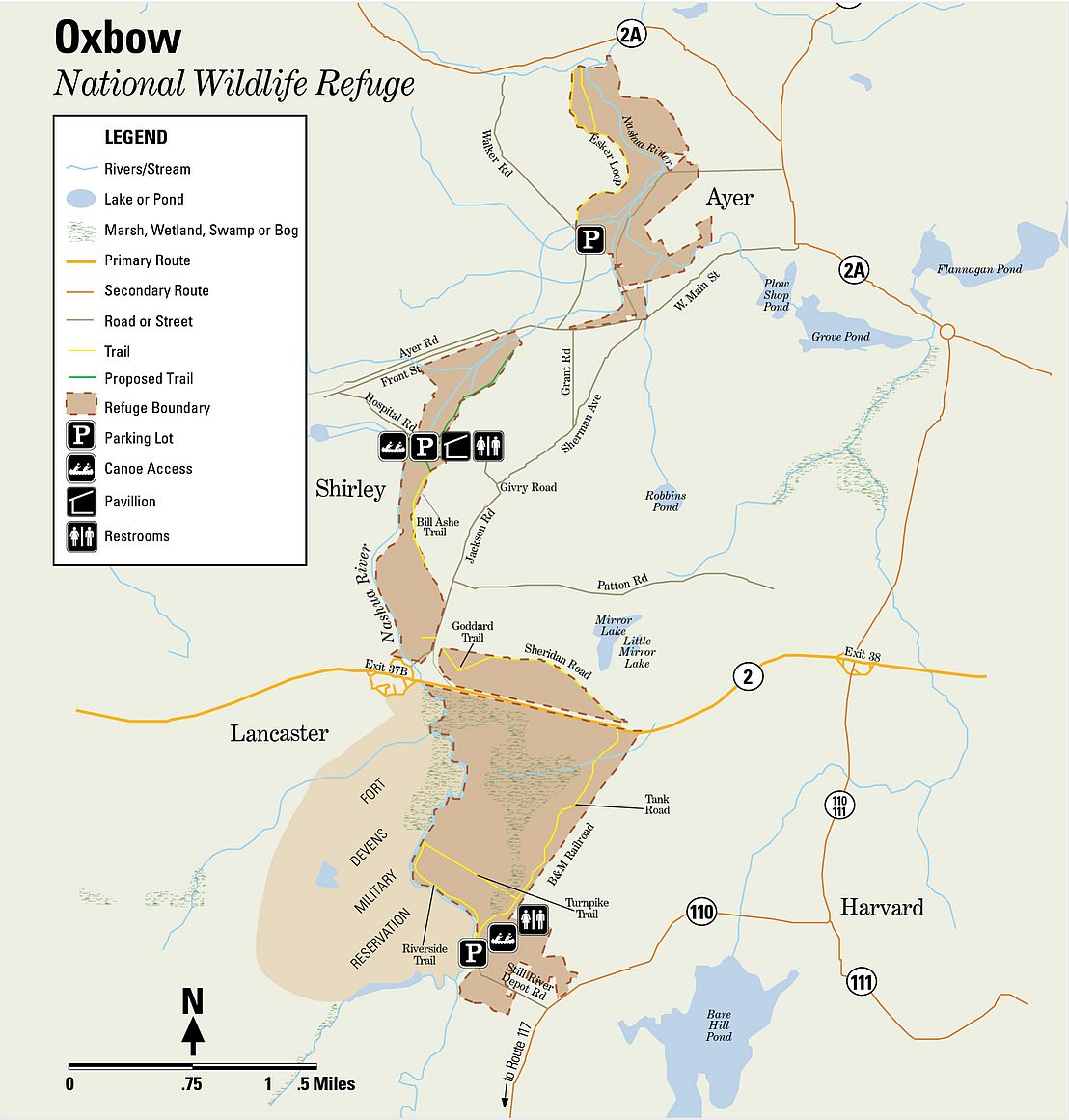Oxbow Trails
Trails
Trail name links below open the interactive map on the National Wildlife Refuge website.
- Goddard Trail (0.52 miles)
- Tank Road Trail (1.74 miles)
- River Trail Loop (0.88 miles)
- Riverside Trail (0.88 miles)
- Esker Loop Trail (1.88 miles)
- Sheridan Road Trail (1.02 miles)
- Turnpike Trail (0.74 miles)
Things to Look Out For
- The Turnpike: While walking along the Nashua River, watch out for the mounded earth that is all that is left of the abutments of a wooden bridge that crossed the Nashua River. These are remnants of the Union Turnpike built in 1805 that ran from Harvard to Leominster. The Turnpike Trail is part of this historic turnpike.
- The River’s History: A bay across the river is called a slough (pronounced slew). It is the footprint of an earlier course of the river. Over the centuries the Nashua River has twisted and turned in its valley. Like all streams and rivers, it scours the outside of bends while the slower-moving water leaves deposits on the inner curves. This activity creates the loops called oxbows that give their name to the Refuge.
- Beaver Activity: Most of the mammals on the refuge are shy and hard to find. Beavers are the best at advertising their presence. The stumps of trees they cut down, their dams, and their large stick lodges are usually visible on the refuge!
- BOOM: The refuge itself was part of Fort Devens until 1974, when it was turned over to the U.S. Fish and Wildlife Service. The U.S. Army still maintains an active presence on their adjacent property. You may hear target practice while visiting Oxbow NWR.


